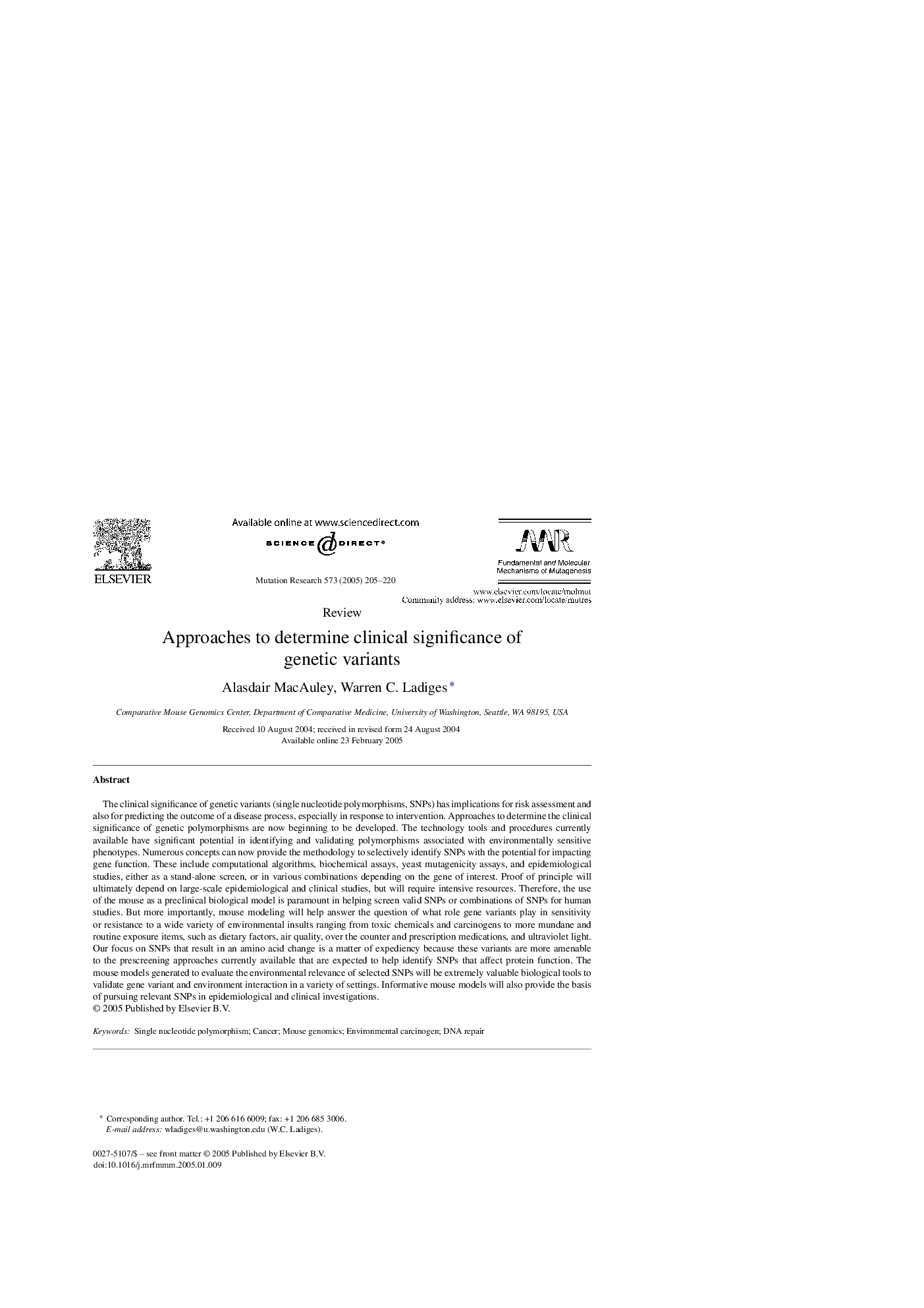| Article ID | Journal | Published Year | Pages | File Type |
|---|---|---|---|---|
| 9909127 | Mutation Research/Fundamental and Molecular Mechanisms of Mutagenesis | 2005 | 16 Pages |
Abstract
The clinical significance of genetic variants (single nucleotide polymorphisms, SNPs) has implications for risk assessment and also for predicting the outcome of a disease process, especially in response to intervention. Approaches to determine the clinical significance of genetic polymorphisms are now beginning to be developed. The technology tools and procedures currently available have significant potential in identifying and validating polymorphisms associated with environmentally sensitive phenotypes. Numerous concepts can now provide the methodology to selectively identify SNPs with the potential for impacting gene function. These include computational algorithms, biochemical assays, yeast mutagenicity assays, and epidemiological studies, either as a stand-alone screen, or in various combinations depending on the gene of interest. Proof of principle will ultimately depend on large-scale epidemiological and clinical studies, but will require intensive resources. Therefore, the use of the mouse as a preclinical biological model is paramount in helping screen valid SNPs or combinations of SNPs for human studies. But more importantly, mouse modeling will help answer the question of what role gene variants play in sensitivity or resistance to a wide variety of environmental insults ranging from toxic chemicals and carcinogens to more mundane and routine exposure items, such as dietary factors, air quality, over the counter and prescription medications, and ultraviolet light. Our focus on SNPs that result in an amino acid change is a matter of expediency because these variants are more amenable to the prescreening approaches currently available that are expected to help identify SNPs that affect protein function. The mouse models generated to evaluate the environmental relevance of selected SNPs will be extremely valuable biological tools to validate gene variant and environment interaction in a variety of settings. Informative mouse models will also provide the basis of pursuing relevant SNPs in epidemiological and clinical investigations.
Related Topics
Life Sciences
Biochemistry, Genetics and Molecular Biology
Cancer Research
Authors
Alasdair MacAuley, Warren C. Ladiges,
